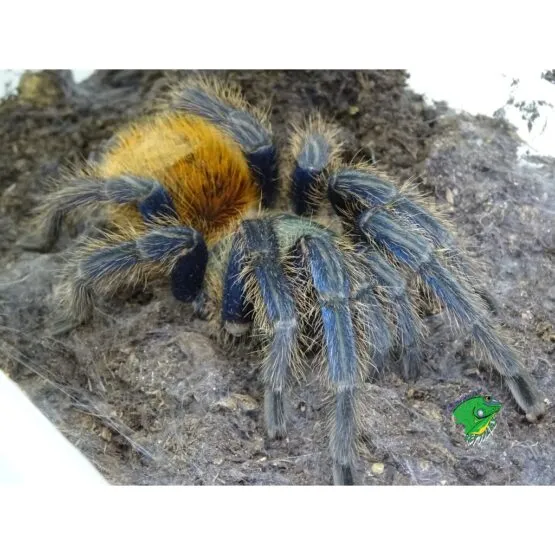Essential Elements of a Blue Tarantula Enclosure
Creating the perfect blue tarantula enclosure is crucial for the health and well-being of your eight-legged friend. This guide will provide you with the top 5 essential tips to ensure your tarantula thrives in its habitat. A well-designed enclosure replicates the tarantula’s natural environment, allowing it to feel safe, secure, and comfortable. From choosing the right size and substrate to maintaining optimal humidity and temperature, each element plays a vital role in your tarantula’s longevity and overall health. Understanding these key components will empower you to create a thriving habitat for your pet.
Choosing the Right Enclosure Size
The size of your blue tarantula’s enclosure is paramount. A space that is too small can restrict movement and lead to stress, while an enclosure that is too large can make it difficult for the tarantula to find food and feel secure. The ideal enclosure size will vary depending on the species and the size of your tarantula. As a general rule, the enclosure should be at least twice as wide as the tarantula’s leg span and about 1.5 times as long. Providing ample space ensures your tarantula has room to move, hunt, and display natural behaviors.
Understanding Tarantula Size and Growth
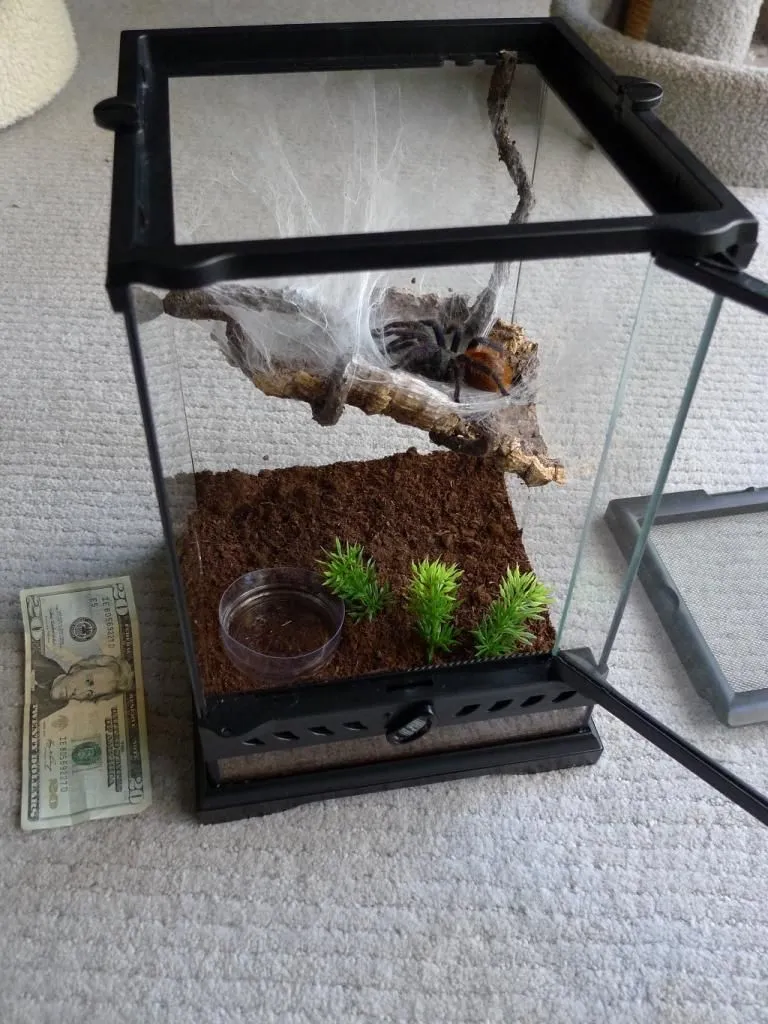
Tarantulas, including the blue tarantula, go through a molting process where they shed their exoskeleton to grow. This growth occurs over time, and therefore the enclosure size must accommodate this. You will need to consider the adult size of the species, because you will need to rehouse it eventually. Observe your tarantula’s growth closely and be prepared to upgrade the enclosure as needed. Providing the right size from the start, will make the process less stressful for the tarantula, and less expensive for you. The size of the tarantula will also dictate how often and what size of food you feed it.
Factors Influencing Enclosure Size
Consider the tarantula’s natural behavior. Is it a burrowing species, or does it prefer to climb? Burrowing tarantulas need a larger substrate depth, while arboreal species benefit from a taller enclosure. Ensure the enclosure allows for adequate ventilation and provides a secure lid to prevent escapes. It’s very easy to find what behavior each species may exhibit. Always prioritize the tarantula’s well-being by providing an enclosure that mirrors its natural habitat. This also includes the substrate, decorations, and placement within the enclosure.
Substrate Selection for Your Tarantula
The substrate is the foundation of your blue tarantula’s habitat, serving multiple purposes, including providing a place for burrowing, maintaining humidity, and absorbing waste. The right substrate is key to a healthy and happy tarantula. Many different substrates can be used, and you must consider what type of tarantula you have. The best options will depend on the species. Each species comes from a different environment, and may require unique substrates. It is always important to do your research before getting the tarantula to find out what best suits your type of spider.
Best Substrate Options for Burrowing and Arboreal Species
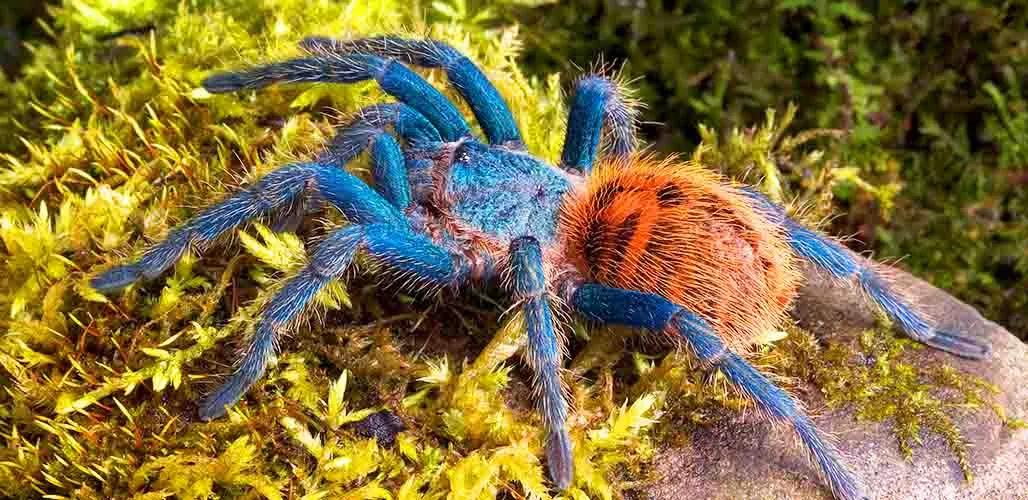
For burrowing species, a mix of peat moss, vermiculite, and coconut fiber is an excellent choice, as it holds moisture well and allows for burrowing. Arboreal species thrive with a substrate that encourages climbing, such as a mix of coco fiber and sphagnum moss. Avoid substrates that are too dusty or contain harmful chemicals. Always ensure the substrate is clean and free of contaminants. It should also be replaced regularly to prevent the buildup of waste and harmful bacteria. The substrate should always be a primary concern when preparing the enclosure.
Importance of Substrate Depth and Moisture
Substrate depth is crucial for burrowing species, allowing them to create secure tunnels. Moisture content is important to regulate humidity levels, but be cautious not to make the substrate too wet, as this can lead to mold and fungal growth. Regularly check the substrate for moisture levels, and adjust accordingly. It should be moist but not saturated. Use a spray bottle to lightly mist the substrate and maintain the desired humidity. This is extremely important for the tarantula to thrive and can ensure a longer lifespan. Always ensure the substrate is kept clean, and free of any waste.
Creating a Secure Environment
A secure enclosure is one of the most important aspects of tarantula keeping, preventing escapes and protecting your pet. Blue tarantulas are masters of escape if given the opportunity. Ensure the enclosure is escape-proof, with a secure lid and no gaps. Check the enclosure regularly for any signs of wear and tear. Be sure to research what the best type of enclosure is to avoid escape. The environment also needs to be secure in the sense of its environment. Keep the enclosure away from high-traffic areas or direct sunlight to reduce stress on your tarantula.
Lid Security and Escape Prevention
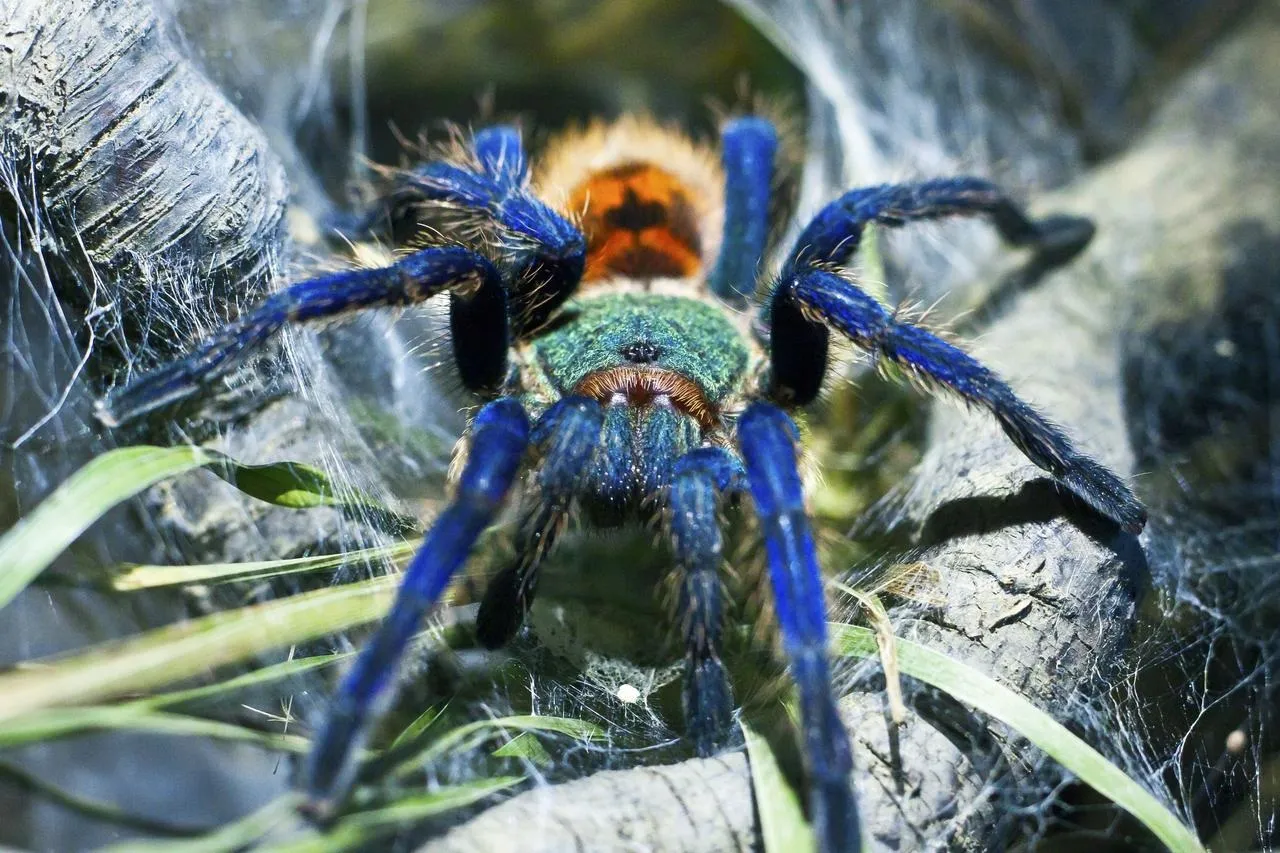
A secure lid is non-negotiable. Ensure the lid fits tightly and has a locking mechanism. Consider a lid with clips or latches, especially for larger tarantulas. Inspect the lid regularly for any damage or weaknesses. Even a small gap can be an invitation for escape. The tarantula can be very quick, and is a master of escape, so do not take any chances. A secure enclosure is a happy enclosure, and will bring you less stress. This is one of the most important aspects of the enclosure, and should not be taken lightly.
Ventilation and Airflow Considerations
Proper ventilation is necessary to prevent the buildup of mold and maintain air quality within the enclosure. Provide adequate airflow by incorporating ventilation holes or mesh into the enclosure design. Ensure the ventilation does not compromise the security of the enclosure. The airflow prevents the enclosure from getting too humid and stagnant. Excessive humidity can promote mold and bacterial growth, which can be harmful to the tarantula. Proper ventilation will prevent issues, and will help to ensure a healthy enclosure.
Maintaining Optimal Humidity and Temperature
Humidity and temperature are essential factors in creating a healthy environment for your blue tarantula. These factors must be closely monitored and maintained to mimic its natural habitat. Too much or too little of either can lead to health problems. Invest in a reliable thermometer and hygrometer to monitor these levels. Regularly checking and adjusting humidity and temperature ensures the well-being of your pet. It is extremely important to understand the specific requirements of your particular tarantula species.
Monitoring Humidity Levels
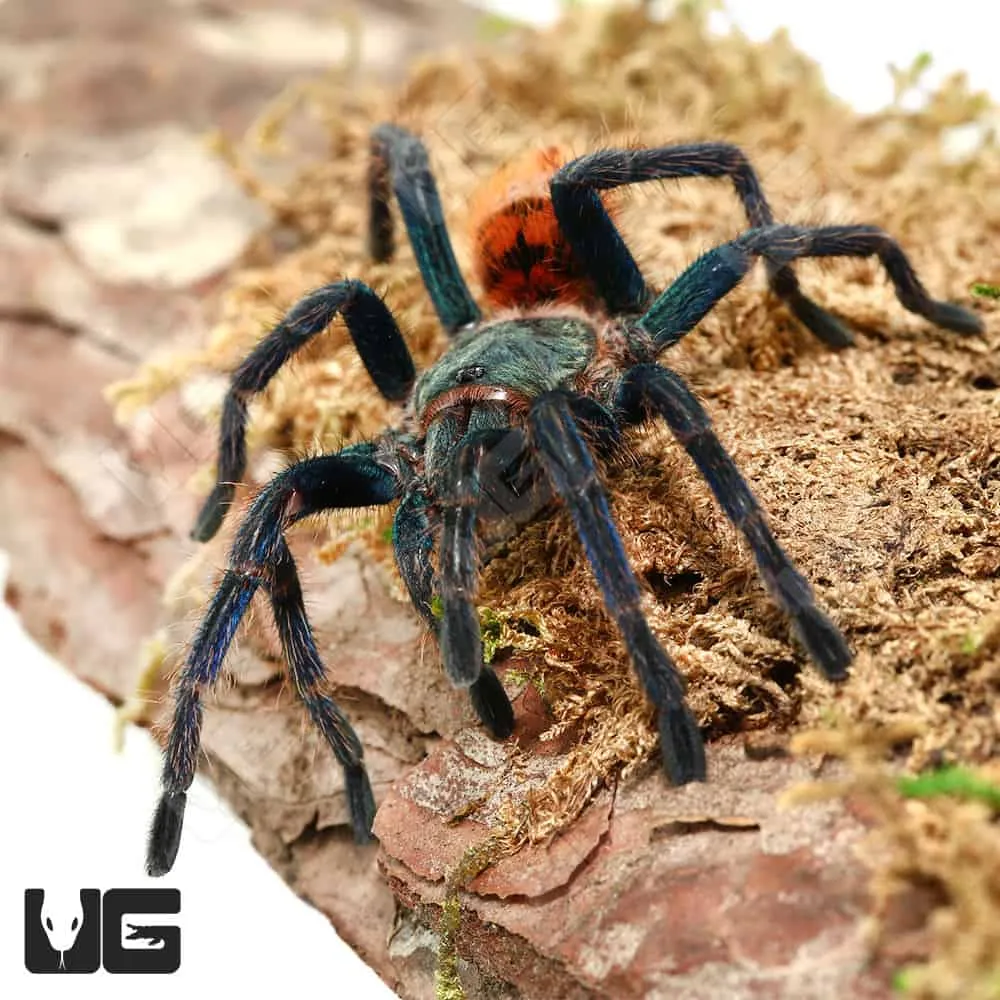
Use a hygrometer to measure humidity levels accurately. These devices are relatively inexpensive and easy to use. The ideal humidity range for your blue tarantula will vary depending on its species. Generally, most tarantulas thrive in a humidity range of 60-80%. Monitor the humidity daily. Adjust the substrate moisture and ventilation as needed to maintain the correct level. The best way to ensure the correct humidity, is to do some research. Understanding where your tarantula came from will help you with this aspect.
Methods for Increasing Humidity
If humidity is too low, mist the enclosure with a spray bottle, focusing on the substrate, or add a water dish. Avoid directly spraying the tarantula. Ensure proper ventilation. Inadequate ventilation can cause mold and fungal growth. By increasing the substrate moisture and using the water dish, you can easily increase the humidity. By making a few adjustments, you can create a thriving environment. Check the humidity levels daily and adjust the moisture in the substrate or ventilation as needed.
Maintaining Optimal Temperature
Temperature is as important as humidity. Maintain a consistent temperature range within the enclosure. Most tarantulas thrive in temperatures between 75-85°F (24-29°C). Monitor the temperature with a thermometer. Avoid placing the enclosure in direct sunlight or near heat sources. Temperature is just as important as humidity, so it is important to monitor this on a daily basis. Also consider the time of year, as temperatures vary. Research what is best for your particular tarantula and make any needed adjustments.
Heating Options and Safety
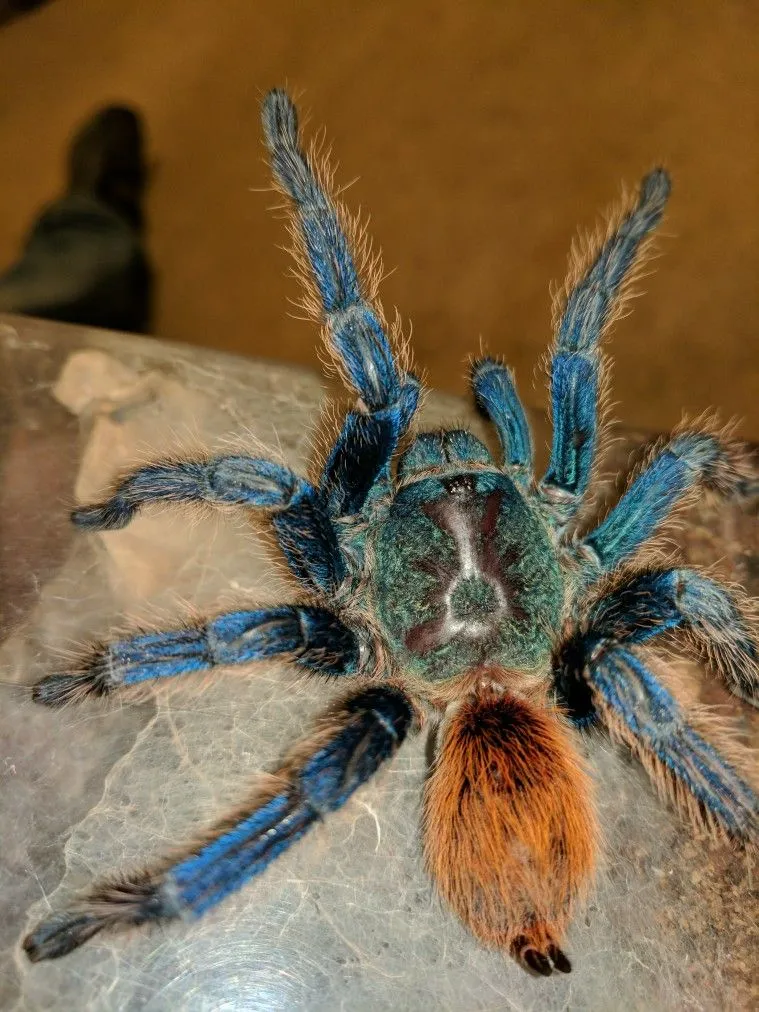
If supplemental heating is needed, use a heat mat or ceramic heat emitter. Always use a thermostat to regulate the temperature and prevent overheating. Place the heat source on the side or back of the enclosure, never directly under the substrate. Regularly check the temperature to ensure it is within the optimal range. Safety is a must when using heat sources. Ensure the heat source is appropriately placed and regulated to avoid any issues. You must always take caution when using heat sources.
Decorating and Enrichment
Decorating your blue tarantula’s enclosure not only enhances its aesthetic appeal but also provides enrichment, stimulating natural behaviors. Providing appropriate hides and decorations allows your tarantula to feel safe, secure, and comfortable, reducing stress and promoting a healthy lifestyle. Carefully select decorations that are safe and non-toxic. This element will help create a proper habitat for your tarantula. You can also add some live plants and decorations for enrichment.
Providing Hides and Shelters
Hides are essential for blue tarantulas, allowing them to retreat and feel secure. Provide at least one hide that is appropriately sized for your tarantula. Cork bark, half logs, and commercially available hides are excellent options. Arrange the hides strategically within the enclosure to provide cover and reduce stress. Make sure the hides are stable and do not pose a risk of crushing your tarantula. A secure hiding spot is essential for your tarantula to thrive and feel safe.
Adding Live Plants and Decorations
Adding live plants and decorations can enrich your tarantula’s environment. Choose non-toxic plants, such as pothos or snake plants, that can thrive in the enclosure’s humidity and temperature. Decorations like branches and rocks can add visual interest and provide climbing opportunities. Ensure all decorations are clean and free of sharp edges. These add enrichment and help the tarantula thrive. They can also make it easier to maintain humidity. Decorations can also reduce stress. Make sure to also provide proper cleaning.
Importance of Water and Feeding
Providing a constant supply of fresh water and appropriate food is crucial for your blue tarantula’s health and survival. The correct water dish and food will greatly impact the tarantula’s health. They provide essential hydration and nutrients. Regular monitoring of these aspects ensures the tarantula’s needs are met and prevents any issues. Paying close attention to their diet and water will lead to a thriving tarantula, and allow you to enjoy your pet for a long time.
Water Dish Selection and Maintenance
Provide a shallow water dish that is easily accessible to your tarantula. The dish should be small enough to prevent accidental drowning. Use a dish made of a non-toxic material. Regularly clean the water dish and refill it with fresh water. Replace the water frequently to prevent bacteria buildup. The water dish should be easy to clean. It should be placed in a way that the tarantula can easily get to it. Always make sure it is accessible and provides clean water at all times.
Frequency and Types of Food
Feed your blue tarantula a diet of appropriately sized insects, such as crickets, roaches, or mealworms. The frequency of feeding will vary depending on the tarantula’s age and species. Generally, juveniles should be fed more often than adults. Remove any uneaten food within 24 hours to prevent mold or attracting unwanted pests. The type of food depends on the species. It is important to understand what your tarantula needs. Always consider what your tarantula would eat in the wild. Always do your research to ensure a proper diet.
